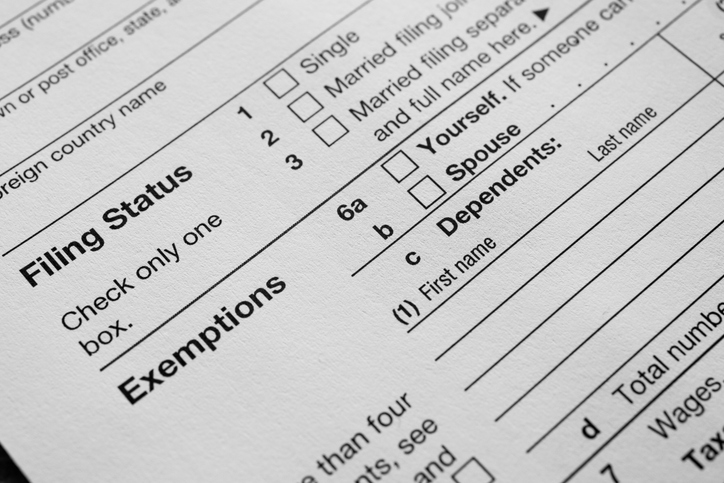One of the biggest tax decisions that a couple can make is whether to take the standard deduction or itemize. The standard deduction offers a straightforward way to reduce your taxable income. In 2025 it’s more valuable than ever thanks to inflation adjustments and new provisions for older taxpayers. Understanding how it works, when to claim it, and how it compares to itemizing is key to making the most of your return and keeping more of your hard-earned money.
A financial advisor can help determine whether itemizing or taking the standard deduction will result in the lowest tax bill.
How the Standard Deduction Works
The standard deduction is a fixed amount the IRS allows you to subtract from your taxable income. For married couples filing jointly, it reflects the higher living costs of two taxpayers while simplifying the filing process. Instead of tracking and documenting every eligible expense, you can take this deduction automatically.
Each year, the IRS updates the standard deduction to keep pace with inflation. That means the deduction amount for married couples filing jointly isn’t static. It usually increases slightly to offset rising costs of living. This adjustment helps ensure taxpayers don’t lose purchasing power over time. This makes it a consistently relevant part of year-to-year tax planning.
Taxpayers can choose between the standard deduction and itemizing deductions, but not both. Itemizing may make sense if your deductible expenses add up to more than the standard deduction. For many couples, though, the standard deduction offers both simplicity and significant tax savings without extra paperwork.
By lowering taxable income, the standard deduction can move some couples into a lower tax bracket or reduce the portion of income taxed at higher rates. This makes it one of the most valuable tools for middle-income households in particular. Understanding how this deduction fits into your overall tax strategy can make a noticeable difference in your annual tax bill.
Married Filing Jointly Standard Deduction in 2025
For couples filing jointly in tax year 2025 (returns filed in 2026), the standard deduction has increased. This is due to both inflation adjustments and new tax legislation. Taking the standard deduction is an automatic reduction, no itemizing required. For many married couples, it remains the more advantageous and simpler route.
| Situation | Base Standard Deduction (2025) | Notes / Adjustments |
|---|---|---|
| Married Filing Jointly (both under 65, not blind) | $30,000 | This reflects the increase from $29,200 in 2024. |
| Married Filing Jointly + one or both age 65 or older / blind | $30,000 + up to $1,600 per spouse | The extra deduction for age or blindness stacks on top of the base amount. |
| Married Filing Separately | $15,750 per spouse | If one spouse itemizes, the other must also. |
| Head of Household / Single (for comparison) | $22,500 / $15,000 | These figures help contextualize the joint deduction amount. |
Additional Standard Deduction for Those That Are 65+

If you or your spouse turns 65 by December 31 of the tax year, the IRS allows an extra deduction. This extra amount is on top of the standard deduction and offers more tax relief to seniors facing the higher medical and living costs that accompany aging.
For tax year 2025 (returns filed in 2026), the additional standard deduction is $2,000 for single filers or heads of household who are 65 or older (or blind). For married couples filing jointly, the extra is $1,600 per spouse who qualifies (i.e. $3,200 if both are 65+). If a taxpayer is both 65 or older and blind, that $2,000 or $1,600 amount doubles (e.g., $4,000 or $3,200).
A key change for 2025 is the introduction of a bonus deduction under the One Big Beautiful Bill (OBBB). From 2025 through 2028, taxpayers age 65 and older may claim an additional $6,000 above the standard extra deduction. That means a married couple where both spouses qualify could get up to $12,000 in new bonus deductions.
Because the bonus deduction has phase-out rules and is new, it’s especially important for older taxpayers, with investment income, retirement distributions, or borderline MAGI, to consult a tax professional or financial advisor. They can help confirm your eligibility and ensure you maximize your deduction, avoiding any mistakes that could inadvertently reduce tax benefits.
Standard Deduction Frequently Asked Questions (FAQs)
How Does the Standard Deduction Work for Dependents?
For dependents, the standard deduction works a little differently than it does for other taxpayers. A dependent’s deduction is limited to the greater of $1,350 in 2025 or their earned income plus $450, up to the regular standard deduction for their filing status. This rule ensures dependents can shield at least a small amount of income from taxes, while also adjusting upward if they have significant earnings from a job. In practice, it means that working dependents, like teens with part-time jobs, can still benefit from the standard deduction, but not at the full level available to independent taxpayers.
When Should You Claim the Standard Deduction?
You should claim the standard deduction when it gives you a larger tax benefit than itemizing and when your deductible expenses don’t exceed the IRS’s set deduction for your filing status. For many taxpayers, especially married couples filing jointly, the standard deduction simplifies the process by reducing taxable income without requiring receipts, records or calculations of eligible expenses. It’s often the best choice if you don’t own a home, have relatively low medical or charitable expenses or simply want to streamline your return.
How Do You Claim the Standard Deduction?
Claiming the standard deduction is straightforward, you simply select it on your tax return when filing with Form 1040. The IRS automatically provides the option, so you don’t need to submit receipts or supporting documents as you would with itemized deductions. As long as you meet eligibility requirements and don’t choose to itemize, the deduction is applied directly to reduce your taxable income. Most tax software and professional preparers will default to the standard deduction if it offers you the greater benefit.
Bottom Line
The standard deduction can have a big impact on how much tax a couple owes or saves. For 2025, updated deduction amounts, dependent rules and additional deductions for taxpayers age 65 or older make it an important part of tax planning. While many couples may benefit from claiming the standard deduction, itemizing can still be advantageous for households with higher deductible expenses.
Tax Planning Tips
- A financial advisor can help you develop a tax plan to manage your liability and support broader financial goals. Finding a financial advisor doesn’t have to be hard. SmartAsset’s free tool matches you with vetted financial advisors who serve your area, and you can have a free introductory call with your advisor matches to decide which one you feel is right for you. If you’re ready to find an advisor who can help you achieve your financial goals, get started now.
- If you want to know how much your next tax refund or balance could be, SmartAsset’s tax return calculator can help you get an estimate.
Photo credit: ©iStock.com/Prostock-Studio, ©iStock.com/EJJohnsonPhotography, ©iStock.com/g-stockstudio
Read the full article here
